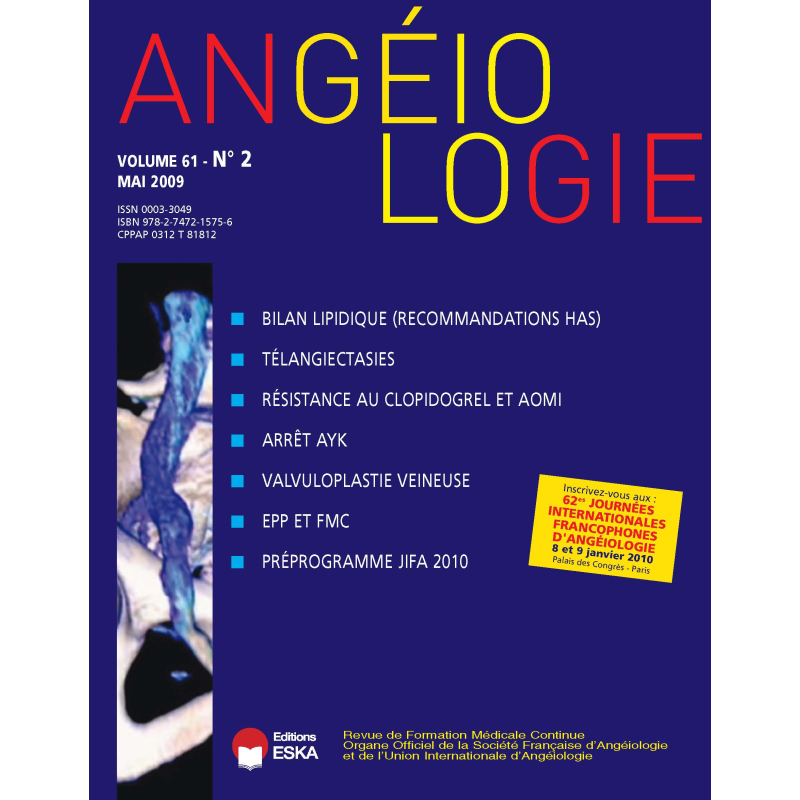



 Security policy
Security policy
(edit with the Customer Reassurance module)
 Delivery policy
Delivery policy
(edit with the Customer Reassurance module)
This study aimed to describe the epidemiological profile, clinical and developmental venous disease thromboembolism (VTE) in patients of African and clarify the role of HIV infection. This is a study retrospective which involved patients hospitalized in Heart of CHUYO between 1 January 2003 and December 31, 2006. Patients were included in two sexes who presented a thrombophlebitis and / or pulmonary embolism documented by Doppler ultrasound and the determination of D-dimers. The study included 60 patients including 43 women and 17 men (sex ratio 2.5), 2.7% the hospital. The average age was 40.17 ± 12.45 years. The clinical features observed were 60 cases of thrombosis (DVT) complicated by pulmonary embolism in five cases. The topography of the sural PST (six cases), popliteal (eight cases), femoral (30 cases) and iliac (12 cases). Of the 60 patients with DVT, 30 were tested for HIV and 12 were HIV positive (seroprevalence 40%), their story was: five cases and unknown seven known cases in which five ARV triple therapy with indinavir and all that blood levels of CD4 were greater than 200/mm3 at the onset of DVT. The average CD4 count of five was 221.5 / mm3. HIV-positive patients were classified as follows (CDC 1993): two cases in C3, C2 and three cases in September case B2. The classic predisposing factors were: prolonged immobilization (22 cases), history of VTE (15 cases), oral contraceptives (12 cases), renal heart (10 cases), abnormal hemoglobin (eight cases), dysmetabolic (Seven cases). The evolution at six months was marked in 45 cases of healing, six deaths, six cases of illness postphlebitic and three cases of recurrent DVT. Authors emphasize the increasing incidence of VTE in cardiovascular disease in Africa, the growing of HIV infection and management of interactions generated by the drug treatment of these both conditions.